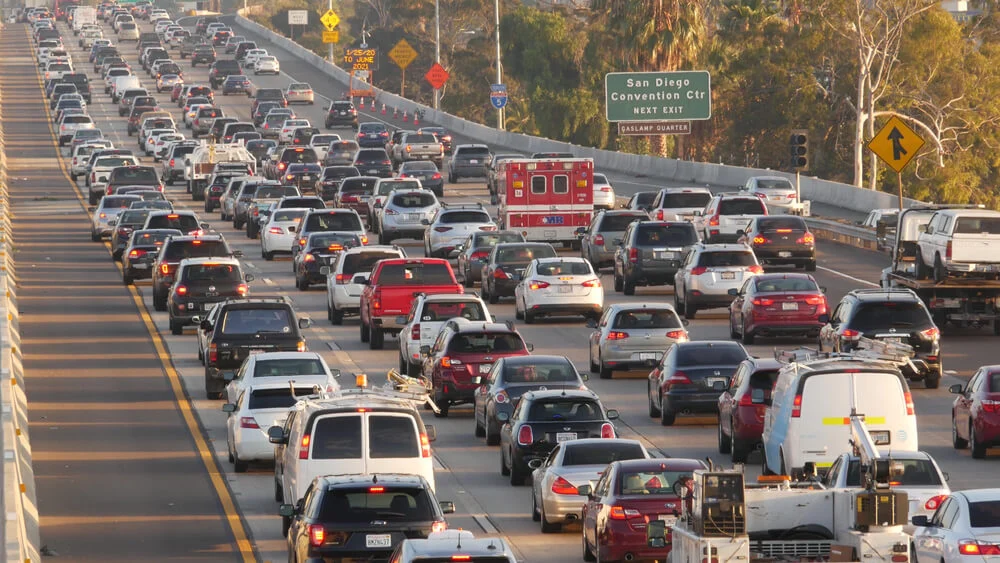When it comes to understanding the wear and tear on your vehicle, the distinction between highway miles and city miles plays a significant role. Each type of driving presents its own set of challenges and benefits, impacting not only your vehicle’s performance but also your wallet. In this article, we’ll delve into the differences between highway miles and city miles, exploring their effects on fuel efficiency, vehicle maintenance, and overall driving experience.
Differences Between Highway Miles and City Miles
| Aspect | Highway Miles | City Miles |
|---|---|---|
| Fuel Efficiency | Higher fuel efficiency due to consistent speeds | Lower fuel efficiency due to frequent stops and starts |
| Wear and Tear | Less wear and tear on engine, brakes, and suspension | Increased wear and tear due to rough road conditions |
| Traffic Conditions | Smoother traffic flow, fewer delays | Heavy traffic, congestion, and longer commute times |
| Driving Habits | Consistent speeds, adherence to traffic regulations | Aggressive driving behaviors, higher accident risk |
Fuel Efficiency
One of the most notable differences between highway miles and city miles lies in fuel efficiency. Vehicles tend to achieve better gas mileage on highways due to consistent speeds and fewer stops and starts. In contrast, city driving involves frequent acceleration and deceleration, leading to higher fuel consumption.
Wear and Tear on the Vehicle
City driving subjects vehicles to more wear and tear compared to highway driving. Stop-and-go traffic, potholes, and rough road conditions in urban areas contribute to increased stress on the engine, brakes, and suspension systems. On the other hand, highway driving generally involves smoother roads and steady speeds, resulting in less strain on the vehicle’s components.
Traffic Conditions
Highway driving typically offers smoother traffic flow with fewer congestion-related delays. In contrast, city driving often involves navigating through heavy traffic, especially during peak hours. Stoplights, intersections, and congested streets contribute to longer commute times and increased stress on the driver.
Driving Habits
The driving habits associated with highway and city driving also differ significantly. Highway drivers tend to maintain consistent speeds and adhere to traffic regulations, promoting safer and more predictable driving conditions. In contrast, city drivers may encounter aggressive driving behaviors, such as tailgating and lane weaving, leading to higher accident rates and increased wear on vehicles.
Pros and Cons of Highway Miles
Pros
- Better fuel efficiency
- Reduced wear and tear on the vehicle
- Faster travel times for long distances
Cons
- Monotonous driving experience
- Potential for driver fatigue
- Limited access to services and amenities
Pros and Cons of City Miles
Pros
- Access to local amenities and services
- Shorter commute distances
- Opportunities for shorter trips and errands
Cons
- Lower fuel efficiency
- Increased wear and tear on the vehicle
- Higher risk of accidents and traffic congestion
Maintenance Tips for Highway and City Driving
Regardless of whether you primarily drive on highways or in the city, proper vehicle maintenance is essential for preserving performance and longevity. Here are some maintenance tips tailored to both highway and city driving:
- Regular Maintenance Checks: Schedule routine inspections to identify and address any potential issues before they escalate.
- Proper Tire Care: Monitor tire pressure and tread depth regularly, as tires are subjected to varying conditions in both highway and city driving.
- Fluid Levels: Keep an eye on essential fluids such as oil, coolant, and brake fluid, replenishing them as needed to ensure optimal engine performance.
- Brake System: Check brake pads and rotors regularly, as frequent braking in city driving can accelerate wear on the braking system.
Tips for Improving Fuel Efficiency
Whether you’re navigating the open road or maneuvering through city streets, adopting fuel-efficient driving habits can help you save money and reduce your carbon footprint. Here are some tips for improving fuel efficiency:
- Smooth Acceleration and Deceleration: Avoid aggressive driving maneuvers such as rapid acceleration and sudden braking, as they can significantly impact fuel consumption.
- Vehicle Maintenance: Keep your vehicle well-maintained by following the manufacturer’s recommended service schedule, including regular oil changes and air filter replacements.
- Route Planning: Plan your routes in advance to minimize unnecessary detours and avoid congested areas whenever possible, optimizing fuel efficiency and reducing travel time.
Conclusion
In conclusion, understanding the differences between highway miles and city miles is crucial for maintaining your vehicle’s performance and efficiency. While highway driving offers better fuel economy and less wear and tear on the vehicle, city driving provides access to local amenities and shorter commute distances.
Also Read:
- 50 Striking Names for Your White Truck – SuvExtreme
- Motor Vehicle Financing: Pros and Cons You Need to Know
- Lexus GX 550 vs Toyota Sequoia – Which Luxurious SUV is Right for You?
By implementing proper maintenance practices and adopting fuel-efficient driving habits, you can maximize the benefits of both types of driving while minimizing their drawbacks.


